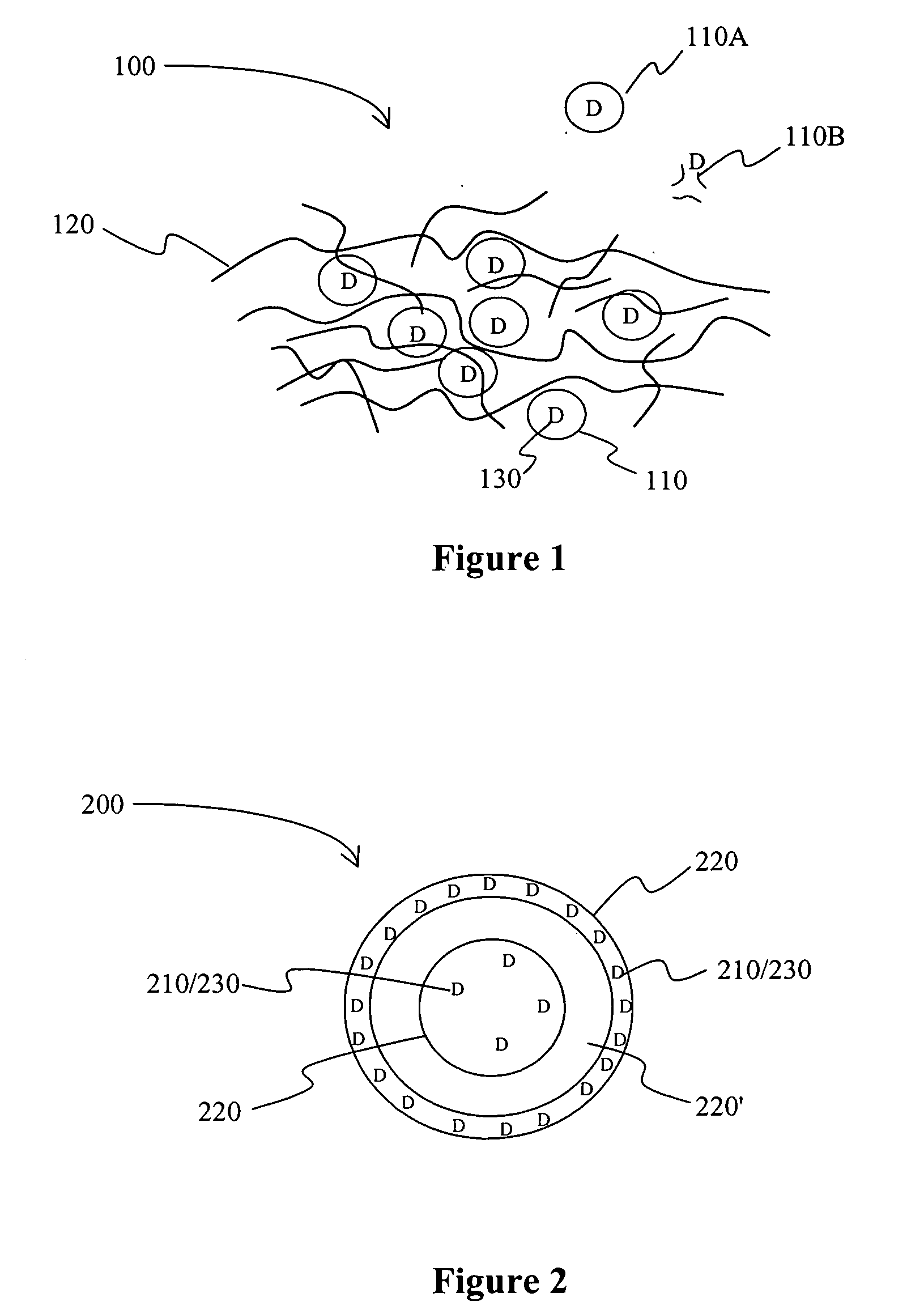Drug delivery compositions and methods
- Summary
- Abstract
- Description
- Claims
- Application Information
AI Technical Summary
Benefits of technology
Problems solved by technology
Method used
Image
Examples
Embodiment Construction
[0013] The inventors generally contemplate that a drug delivery system includes a first carrier to which a drug is coupled (C1-D), and a second carrier (C2), wherein the C1-D and C2 are coupled or otherwise interconnected to each other such that release of the drug D (preferably in complex with C1) from C2 is determined by C1 / C2 interaction, which is independent of physicochemical properties of drug D with its carrier C1. While not limiting to the inventive subject matter, it is typically preferred that D is released from C1 at a rate that is faster than a release rate of C1 from C2. Viewed from another perspective, the release from a drug into a system in most preferred aspects of the inventive subject matter is predominantly determined by interaction of C1 and C2, and substantially independent from interaction between D and C2. Particularly preferred carriers are sub-microscopic in size (i.e., less than 10 micron), and / or it is further especially preferred that the first carrier C...
PUM
| Property | Measurement | Unit |
|---|---|---|
| Concentration | aaaaa | aaaaa |
| Biodegradability | aaaaa | aaaaa |
Abstract
Description
Claims
Application Information
 Login to View More
Login to View More - R&D Engineer
- R&D Manager
- IP Professional
- Industry Leading Data Capabilities
- Powerful AI technology
- Patent DNA Extraction
Browse by: Latest US Patents, China's latest patents, Technical Efficacy Thesaurus, Application Domain, Technology Topic, Popular Technical Reports.
© 2024 PatSnap. All rights reserved.Legal|Privacy policy|Modern Slavery Act Transparency Statement|Sitemap|About US| Contact US: help@patsnap.com








